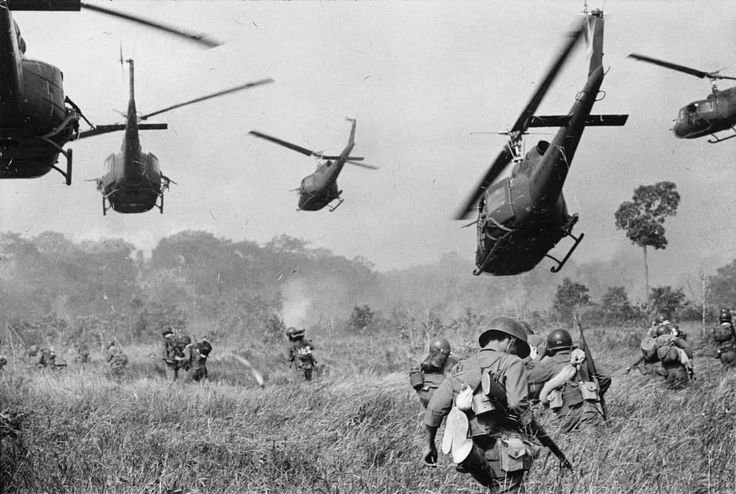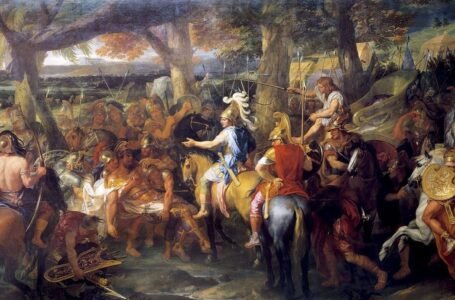The Vietnam War: A Turning Point in Modern History

The Vietnam War (1955–1975) was a protracted conflict that emerged from the political and ideological struggle between communist North Vietnam and capitalist South Vietnam. It escalated into a global confrontation involving major Cold War powers, particularly the United States, the Soviet Union, and China. The war is often considered one of the most controversial conflicts of the 20th century due to its complex causes, immense human and financial costs, and the long-lasting impact it had on global politics, military strategies, and social consciousness. This article provides a comprehensive analysis of the Vietnam War, examining its historical roots, military strategies, key events, and enduring consequences.
Historical Background and Causes
Vietnam Under Colonial Rule
Vietnam was under French colonial rule from the late 19th century as part of French Indochina, which included Laos and Cambodia. The French imposed economic and political structures that marginalized local governance and heavily exploited the region’s resources, leading to widespread resistance. The early 20th century saw the rise of nationalist movements, with Ho Chi Minh emerging as a key leader in the struggle for independence.
During World War II, Vietnam was occupied by Japanese forces, weakening French control and allowing nationalist groups, particularly the communist-led Viet Minh, to gain influence. Following Japan’s defeat in 1945, Ho Chi Minh declared Vietnam’s independence, citing inspiration from the U.S. Declaration of Independence. However, France attempted to reclaim its colony, leading to the First Indochina War (1946–1954).
The First Indochina War
The First Indochina War was a prolonged struggle between the French and the Viet Minh, culminating in the decisive 1954 Battle of Dien Bien Phu, where Viet Minh forces besieged and defeated the French. This led to the Geneva Accords, which temporarily divided Vietnam at the 17th parallel, with Ho Chi Minh’s communist government in the North and an anti-communist regime in the South under Emperor Bao Dai. The accords called for nationwide elections in 1956 to unify the country, but these were never held, as South Vietnam, backed by the U.S., refused to participate, fearing a communist victory.
The Cold War and U.S. Involvement
The Vietnam War was deeply rooted in Cold War geopolitics. The U.S. feared that a communist victory in Vietnam would trigger a domino effect, leading to the fall of neighboring countries to communism. President Dwight D. Eisenhower first provided military advisors and financial aid to South Vietnam, and his successors, John F. Kennedy and Lyndon B. Johnson, escalated U.S. involvement significantly.
Escalation of the Conflict
The Rise of the Viet Cong
By the late 1950s, communist insurgents in South Vietnam, known as the Viet Cong (National Liberation Front), began guerrilla attacks against the government. The insurgency grew as the South Vietnamese government, led by President Ngo Dinh Diem, struggled with internal corruption, religious discrimination against Buddhists, and lack of popular support. Diem’s oppressive policies led to widespread dissent and further fuelled the insurgency.
The Gulf of Tonkin Incident and American Escalation
In 1964, the Gulf of Tonkin Incident—where U.S. destroyers were allegedly attacked by North Vietnamese patrol boats—provided a pretext for greater military involvement. In response, Congress passed the Gulf of Tonkin Resolution, granting President Johnson broad powers to conduct military operations without a formal declaration of war. By 1965, the U.S. had deployed over 200,000 troops, and the war escalated into full-scale conflict.
Military Strategies and Challenges
The U.S. adopted a strategy of attrition, aiming to weaken the enemy through superior firepower and large-scale operations. Bombing campaigns such as Operation Rolling Thunder sought to destroy North Vietnam’s industrial and military infrastructure. However, the North Vietnamese, led by General Vo Nguyen Giap, employed guerrilla tactics, leveraging local support, deep knowledge of the terrain, and an extensive underground tunnel network.
Despite superior firepower, U.S. forces faced significant challenges:
- Unfamiliar Terrain: Dense jungles, mountainous regions, and the enemy’s use of the Ho Chi Minh Trail made conventional warfare difficult.
- Local Resistance: The Viet Cong’s ability to blend in with civilian populations made it hard for U.S. troops to differentiate between combatants and non-combatants.
- Public Support Issues: The lack of clear objectives and mounting casualties fueled anti-war sentiment back in the U.S.
Key Turning Points
The Tet Offensive
The Tet Offensive was a major coordinated attack launched by North Vietnamese and Viet Cong forces during the Vietnamese New Year holiday (Tet) in January 1968. They attacked more than 100 cities and military targets, including the U.S. embassy in Saigon. While militarily unsuccessful, the offensive shocked the American public, who had been led to believe that the war was nearing victory. The psychological impact was profound, leading to declining public support and increasing anti-war demonstrations in the U.S.
The My Lai Massacre and Media Influence
In 1969, reports surfaced of the My Lai Massacre, in which U.S. troops had killed hundreds of unarmed Vietnamese civilians. This atrocity further fuelled anti-war sentiment and highlighted the moral complexities of the conflict. Media coverage of the war, including graphic images and television reports, played a significant role in turning public opinion against continued U.S. involvement.
Nixon’s Vietnamization Strategy
President Richard Nixon, elected in 1968, introduced the policy of Vietnamization, which aimed to train and equip South Vietnamese forces to take over combat responsibilities while gradually withdrawing U.S. troops. However, he also expanded the war into neighbouring Cambodia and Laos in an effort to disrupt North Vietnamese supply lines, leading to widespread protests, including the 1970 Kent State shootings, where four students were killed by the National Guard during an anti-war demonstration.
Paris Peace Accords and Ceasefire
In January 1973, the Paris Peace Accords were signed, bringing an official end to U.S. military involvement. The agreement included provisions for a ceasefire, prisoner exchanges, and the withdrawal of American troops. However, fighting continued between North and South Vietnamese forces.
The Fall of Saigon and Aftermath (1975–1980s)
In April 1975, North Vietnamese forces launched their final offensive, capturing Saigon with little resistance. The dramatic evacuation of U.S. personnel and South Vietnamese allies from the American embassy marked the symbolic end of the war. South Vietnam was officially reunified with the North under communist rule, and the country was renamed the Socialist Republic of Vietnam.
Consequences for Vietnam
- Economic Struggles: The war devastated Vietnam’s economy and infrastructure, leading to years of hardship and dependence on Soviet aid.
- Social Impact: Re-education camps were established for former South Vietnamese officials, and many citizens fled the country as refugees, becoming known as “boat people.”
- Environmental Damage: The use of defoliants like Agent Orange caused severe health issues and environmental degradation, with long-term effects still felt today.
Impact on the U.S.
- Political Fallout: The war damaged trust in government, leading to the “Vietnam Syndrome,” a reluctance to engage in future military interventions.
- Veterans’ Struggles: Many returning soldiers suffered from PTSD and struggled to reintegrate into society, facing a lack of support and understanding.
Legacy of the Vietnam War
The Vietnam War prompted the U.S. military to rethink its approach to warfare, leading to a focus on counterinsurgency tactics and an emphasis on public support in future conflicts. It also influenced later wars, such as those in Iraq and Afghanistan.
The war left an indelible mark on popular culture, inspiring literature, films, and music. Works such as Platoon, Full Metal Jacket, and songs by Bob Dylan and Creedence Clearwater Revival captured the war’s complexity and its impact on those who lived through it.
Conclusion
The Vietnam War was a watershed moment in global history, symbolising the complexities of ideological conflicts, guerrilla warfare, and the limits of military power. Its legacy continues to shape modern geopolitics, military strategies, and cultural memory.


